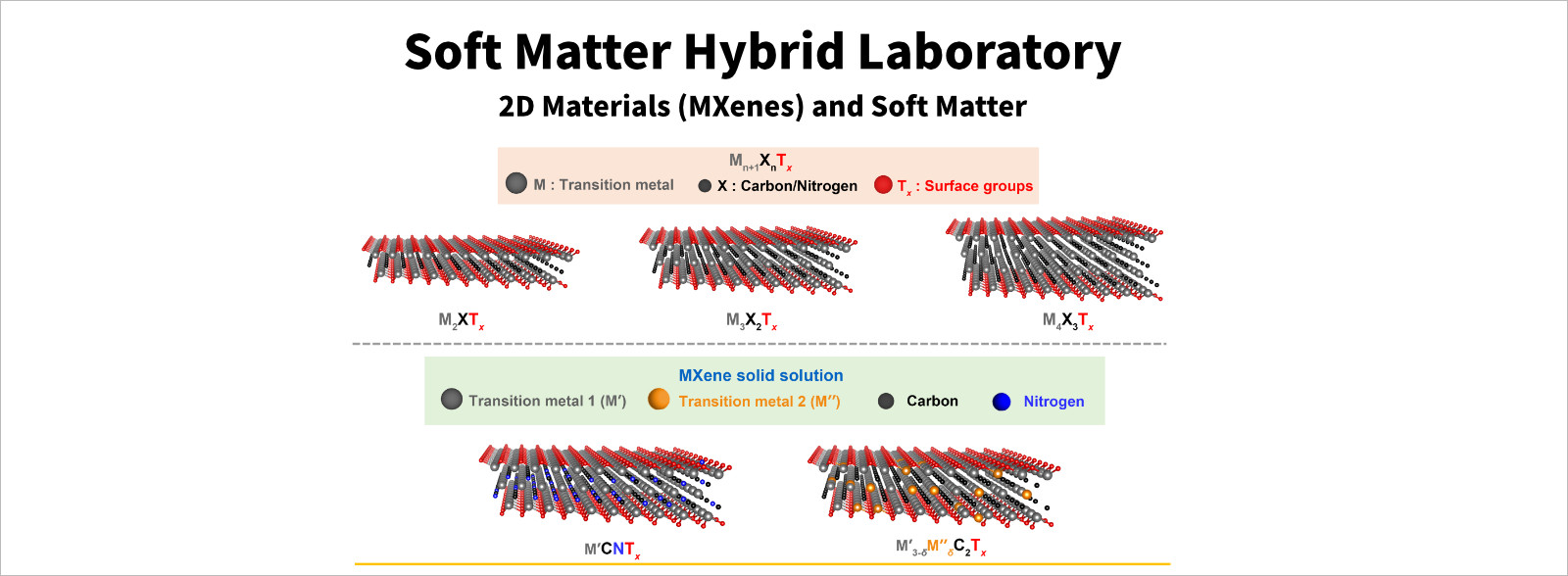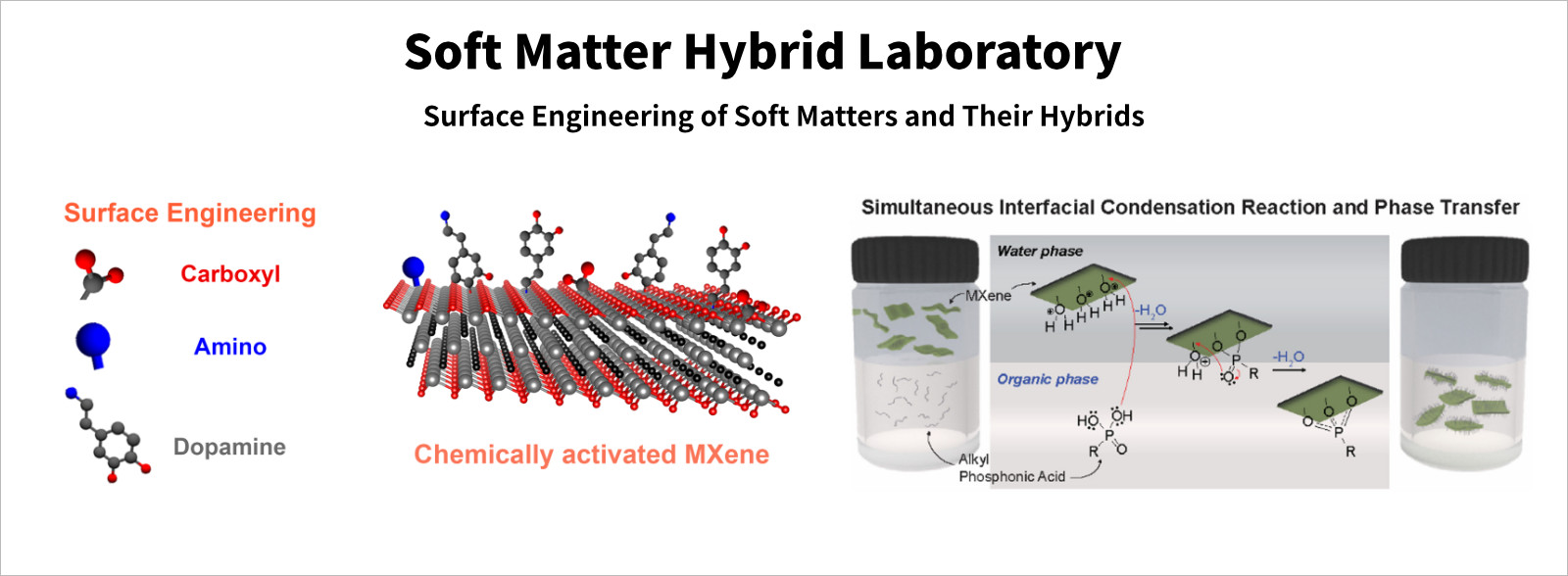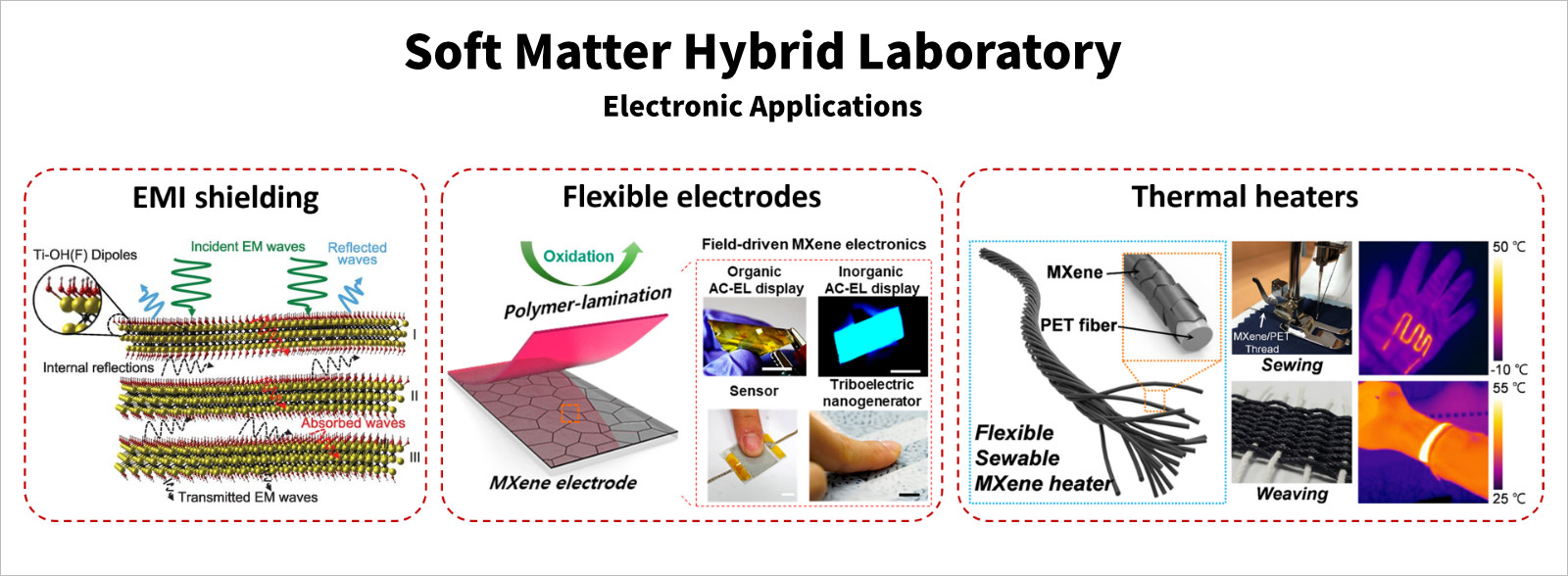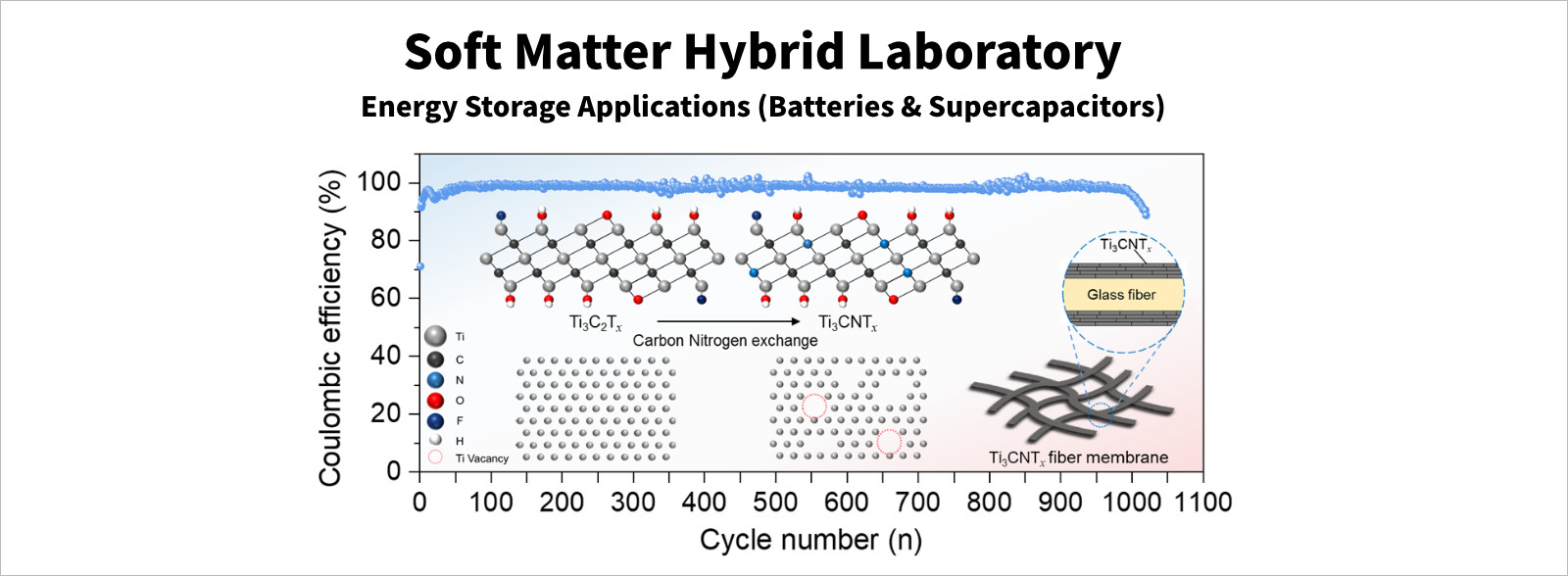Soft Matter Hybrid Laboratory
Our group “Soft Matter Hybrid Laboratory, SMHL” is working on nanomaterial-based soft matter and hybrids for multifunctional applications. Particularly, the principal research areas include two-dimensional (2D) soft materials, surface engineering of soft matter and their hybrids, electronic applications (electromagnetic interference or EMI shielding, stealth technology, flexible electronics, thermal heaters, and displays), and energy storage applications (batteries and supercapacitors).
Currently, we are looking for highly motivated graduate students and postdoctoral researchers capable of working in an interdisciplinary team. If you are interested in joining our team, contact us at chongminkoo@skku.edu.
2D Materials (MXenes) & Soft Matter Hybrids
Low dimensional materials like MXenes are unique for practical applications owing to their high electrical conductivity, large surface area, high aspect ratio, abundant active sites, and tunable structural properties. Highly conductive MXenes are explored in depth to understand their fundamental properties and using them into real applications like electromagnetic shielding, electrochemical sensors, batteries, and supercapacitors. We study on development of new MXenes including transition metal carbides, carbonitrides, and nitrides with electrically conductive, semiconducting, and magnetic properties. We are also developing nanomaterials based soft matter hybrids to tune their physico-chemical, optoelectronic, and electrochemical properties.

Surface Engineering of Soft Matters and Their Hybrids
Soft 2D materials provide large surface area with abundant active sites on the surface which render it tunable through multiple chemical techniques such as interfacial assembly, grafting, and ligands chemistry. 2D MXenes with hydrophilic surface terminations develop stable aqueous dispersions whereas their modified surface chemistry allow them to disperse in organic polar and non-polar solvents, allowing us to widen the areas of applications in liquid processing techniques, composites fabrication, and liquid crystalline phase in organic solutions. This development helps us to prolong their shelf-life by overcoming oxidation and degradation issues of aqueous dispersions.

Electronic Applications (EMI shielding, Stealth, Flexible electrodes, Heaters, Displays, and etc.)
Structural controlled properties of 2D materials bring them on the forefront of electrical and electronic applications. MXenes are the most conductive class of 2D materials with outstanding metallic conductivity of ~25000 S/cm. This electrical conductivity make them ideal for electromagnetic interference (EMI) shielding where high electrical conductivity is prerequisite along with microstructural properties. Ti3C2Tx MXene shows excellent EMI shielding at sub-nanometer scale due to high electrical conductivity whereas Ti3CNTx with modified meta-material like porous structure provides state-of-the-art EMI shielding effectiveness of 116 dB at 40 micrometer thickness, higher than that of all synthetic materials. High electrical conductivity makes MXenes promising for flexible and transparent electrodes, efficient thermal heaters, ultra-responsive electrochemical and IR sensors, and displays.

Energy Storage Applications (Batteries and Supercapacitors)
Soft matter are promising due to large surface area and high surface activity for electrochemical energy storage and conversion applications. Our group is developing conductive MXene electrodes for batteries and capacitors. A wide range of MXene candidates with different chemical compositions and electrochemical properties can be used for next generation energy storage materials. Stable aqueous and non-aqueous dispersions of MXenes ensure to make highly conductive and flexible electrodes without any addition of binders.
